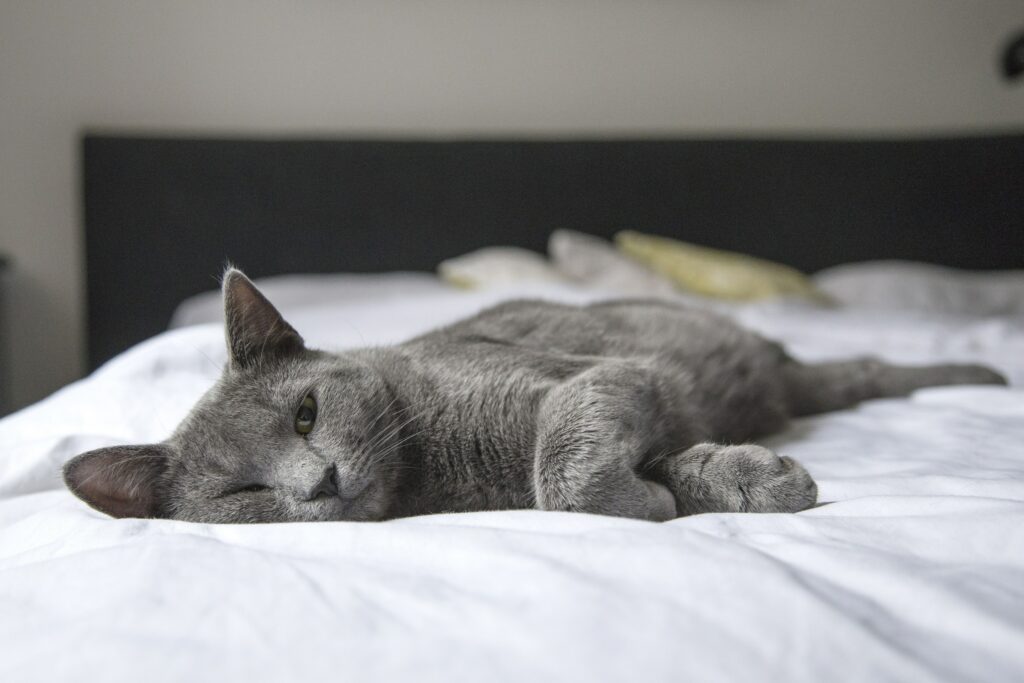By Marie Haaland // SWNS
NEWS COPY W/ VIDEO + INFOGRAPHIC
When it comes to your feline friend, age is nothing but a number.
A new survey of 2,000 American cat owners revealed 83% believe age doesn’t define their pet — and 78% of respondents said their cat still acts like a kitten, regardless of how old they are.
But this youthful attitude can cause some issues: 72% of respondents said they don’t always pay attention to the signs of aging because their cat acts younger than they are.
In addition, two-thirds (66%) admit they ignore the signs of aging in their four-legged friend when their cat is acting healthy.
Commissioned by Royal Canin and conducted by OnePoll for National Take Your Cat to the Vet Day, the survey revealed that this isn’t the only problem when looking at signs of aging in pets.
The results found that six in 10 cat owners aren’t even sure what behaviors they should look for as their pet grows older.
When given a list of the common things to watch for, 57% were aware that “playing less” could be related to their pet growing older, but only 32% knew “hiding more” could also be a sign.
Only a third (32%) said they watch their cat “very carefully” for signs of aging — which might be why some respondents cannot easily identify these indications.
“Cats are extremely stoic, and sometimes signs of aging are difficult to recognize, such as weight loss, bad breath, increased thirst and changes in temperament. However, these signs can also signal larger health issues,” said Dr. Catherine Lenox, Board Certified Veterinary Nutritionist and Regulatory Veterinary Manager at Royal Canin North America. “For example, while a decrease in appetite could mean your cat is getting older, it could also mean he or she has chronic kidney disease. It’s extremely important to stay curious about cat health and collaborate with your veterinarian on identifying behaviors that may indicate something could be wrong.”
The survey looked beyond the behaviors that can come with aging and delved into the measures that pet owners can take to keep their cats healthy throughout their lifetime.
The average respondent hasn’t taken their cat to the vet in over seven months — and 15% of respondents said it’s been over a year since they last went for a visit.
That may be partly due to the 40% of respondents who said they only take their cat to the vet when something’s wrong, versus going for regular check-ups.
Age may play a part as well: 17% said they take their cat to the vet less often as they’ve grown older.
The data showed that 52% don’t start paying attention to preventative health measures until their pet hits a certain age — and for those respondents, their cat needs to be over five and a half years old before they’re concerned about the health effects associated with aging.
“The best thing you can do to improve the wellbeing of your cat is to take he or she for regular vet visits and routine lab work,” said Dr. Lenox. “While August 22 is Take Your Cat to the Vet Day, cat owners should make it a point to take their cat to the vet every year to make sure any issues that seem silent are caught and addressed early.”
COMMON SIGNS OF AGING IN CATS, AS IDENTIFIED BY RESPONDENTS
- Playing less (57%)
- Sleeping more (51%)
- Eating less (46%)
- Grumpiness/changes in temperament (37%)
- Decreased mobility (37%)
- Less interest in people or other animals (33%)
- Hiding more (32%)
- Not grooming themselves (30%)
- Cloudy eyes (27%)
- Weight loss (27%)
